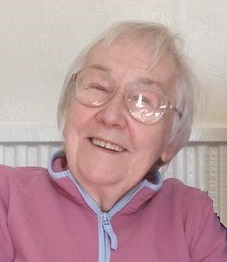Summary
The women from Rhondda Cynon Taf have long since made valuable contributions to Welsh life, science and the arts. It is time we celebrate their lives.
This article appeared in Welsh translation in the June 2024 women’s and lifestyle magazine Cara under the the same title, but slightly edited to fit the two pages.
For a medium-sized town, Pontypridd looms large in popular music. Starting in the nineteenth century with James James’s trail-blazing tune ‘Glanrhondda’, his son later added the words and so ‘invented’ Wales’s national anthem. Since it was first sung in 1905 ahead of the historic rugby match between Wales and the All Blacks, it’s been an international hit. The words ‘Hen wlad fy nhadau’ appear prophetic in its profession of beefy, if soulful manliness. It is therefore no small wonder that none other than Tom Jones would later pick up the mantle, with several male-fronted and -backed rock bands steadily following in his wake. In light of such a male-centred outlook on valleys history, we might inevitably ask: were there no women at hand to set inspiring examples?
One place to look for Wales’s historical women is the Bywgraffiadur. Owing to historical circumstances of how the original articles were written and compiled in the 1950s and 1970s, it turns out, this too, is a very male-oriented collection of articles about the great, good and sometimes doubtful in Welsh history. Thanks to a new project funded by the Anti-Racist Wales Action Plan, this is slowly, but surely changing. Above all, the Diversity Project collects names of and commissions new articles about historical Black, Asian and minority ethnic people who either left their mark on Welsh society or whose link with Wales enabled them to make an impact elsewhere in the world. As part of this project, we are also collecting the names of shamefully overlooked women so that we can add their stories to the national canon. It will therefore come as no surprise that historically, Pontypridd and surroundings have produced some cracking women who don’t need to ask where have all the good men gone, but can be their own heroes, larger than life (see what I did there?).

Source: National Library of Wales / Wikimedia Commons
Let’s start with examples from some of the articles we have published in the Bywgraffiadur already. Sticking with the musical theme, we celebrate the live of Mary ‘May’ John (1874-1962). Born in Ton Pentre, she grew up in a musical and devout Calvinist Methodist family. From childhood, May not only sang in chapel, but also began competing in Rhondda eisteddfodau. Her first national success came on home turf no less, when she won the soprano duet competition in the Pontypridd National Eisteddfod of 1893. This achievement brought her a personal invitation to the World Trade Fair in Chicago! Returning from a tour of the US with Clara Novello’s choir, she sang before the Queen and went on to study at the Royal Academy of Music in London. During the years of the Revival, May took a break from paid professional performances and raised her singing and preaching voice in countless of meetings all over Wales, urging attending women to ‘come forward for there was much work before them that men could not do’. After the Revival, she returned to her paid work as a professional singer, but stayed close to home, looking after her ailing parents. Eventually retiring from the public life as a performer, on her death in 1962, the gwlad beirdd a chantorion was painfully quiet about this once great and celebrated voice as not a single public obituary noticed her passing.
Another musical talent who grew up in Pontypridd was Morfydd Owen (1891-1918). Like May John, she grew up with music in her family and studied at the Royal Academy of Music. Unlike May, however, Morfydd made her mark in musical composition. Already during her time as a student, she won several awards, most notably her Nocturne in D♭ major. She earned a sub-professorship at the Royal Academy for the quality of her compositions, but her professional success as teacher and composer was short-lived. Married to Ernest Jones, who turned out to be an overbearing and controlling husband, she did not receive proper medical attention following the removal of her appendix. It has been suggested that Ernest delayed consultation and a later autopsy for fear of uncovering Morfydd’s pregnancy to her distressed family and friends. Morfydd composed only for a little over 10 years, but she left a treasure trove of over 250 scores of songs for voice and piano as well as arrangements for ensemble pieces and full orchestra.

Source: Rhian Davies, Never So Pure a Sight / Wikipedia
Leaving the world of music, Rhondda Cynon Taf women have also greatly contributed to the world of science through different means. Among them we find two particular greats, Florence Rees (1906-1994) and Elaine Morgan (1920-2013). Florence grew up in Aberdare and developed a keen interest in zoology and enrolled at Cardiff university. As a gifted young scholar, she made her mark as a parasitologist who specialised in the study of worms and soon took up a lectureship at Aberystwyth University. She made it her habit to take her students to study trips all over Europe and was also invited to lecture at the University of Ghana. As the crowning award for decades of dedication to her subject and her internationally recognised scholarship, the famous Linnean Society presented her with a medal.

Source: AlgisKuliukas / Wikimedia Commons
While Florence Rees made her mark in microbiology, Elaine Morgan trained her eyes on larger organisms, humans, and communicating evolutionary science to lay-audiences. Born and raised in Pontypridd, she studied English at Oxford and became involved in political activism. Following her initial work as an educator, she began writing scripts for the BBC. In her thirties, her broadcasting activities eventually became her main source of employment as she branched out into writing stories, plays and drama series for television and radio, most significant among them How Green Was My Valley and The Life and Times of David Lloyd George. By the 1970s, however, she pondered when Wales was going to be ready to embrace women’s stories and experiences. It is from this perspective that she wrote her most important works, The Descent of Woman (1972) and The Aquatic Ape (1982), which both centred the importance of women to the evolution of humanity. For her uniquely Welsh contribution to the world of broadcast and her science communication, she was posthumously recognised in 2022 with a bronze statue in her likeness in Mountain Ash, where she lived and worked for most part of her life.
These are just some glimpses of women’s lives already captured by the Bywgraffiadur, but we have much more work ahead of us. We are currently seeking authors who would like to write about the life of Elizabeth Andrews (1882-1960), the political organiser and women’s rights activist who also made her mark as a magistrate and political editor. There is also Joyce Daniel (1890-1985) an early campaigner for women’s health and access to birth control. Ceridwen Brown (1896-1976) is yet another fierce campaigner and community organiser whose story is waiting to be heard. She was involved in anti-war and pro-peace movements, campaigned against austerity politics and supported community grassroots organisations throughout her life. Finally, we are looking for an author to write the life story of Jenny James (1927-2014), the first woman to swim Bristol Channel and the first Welsh person to swim the English Channel. Working as a swimming instructor and lifeguard, she saved over 100 people’s lives from drowning.
If you know of a historical Rhondda Cynon Taf woman whose inspiring story has not yet been captured and shared in the Bywgraffiadur, please send in your nominations to: ybc@llgc.org.uk. Similarly, if the stories above have inspired you to pick up the pen, get in touch to become one of our authors writing the history of hen wlad fy mamau one article at a time.

